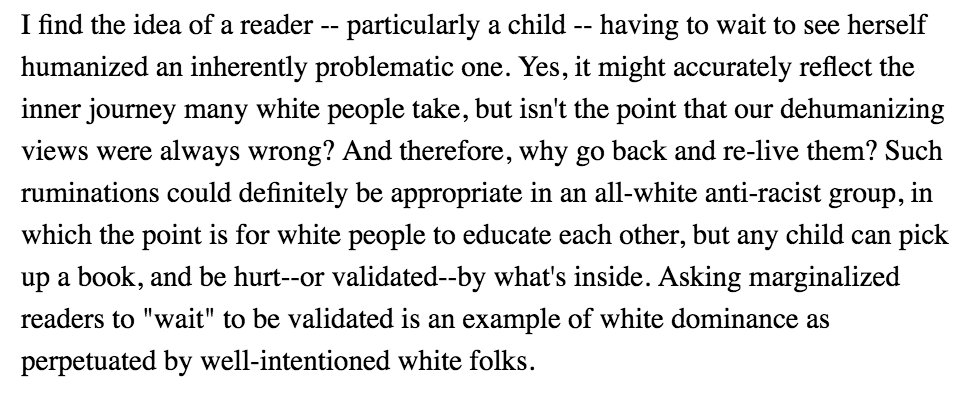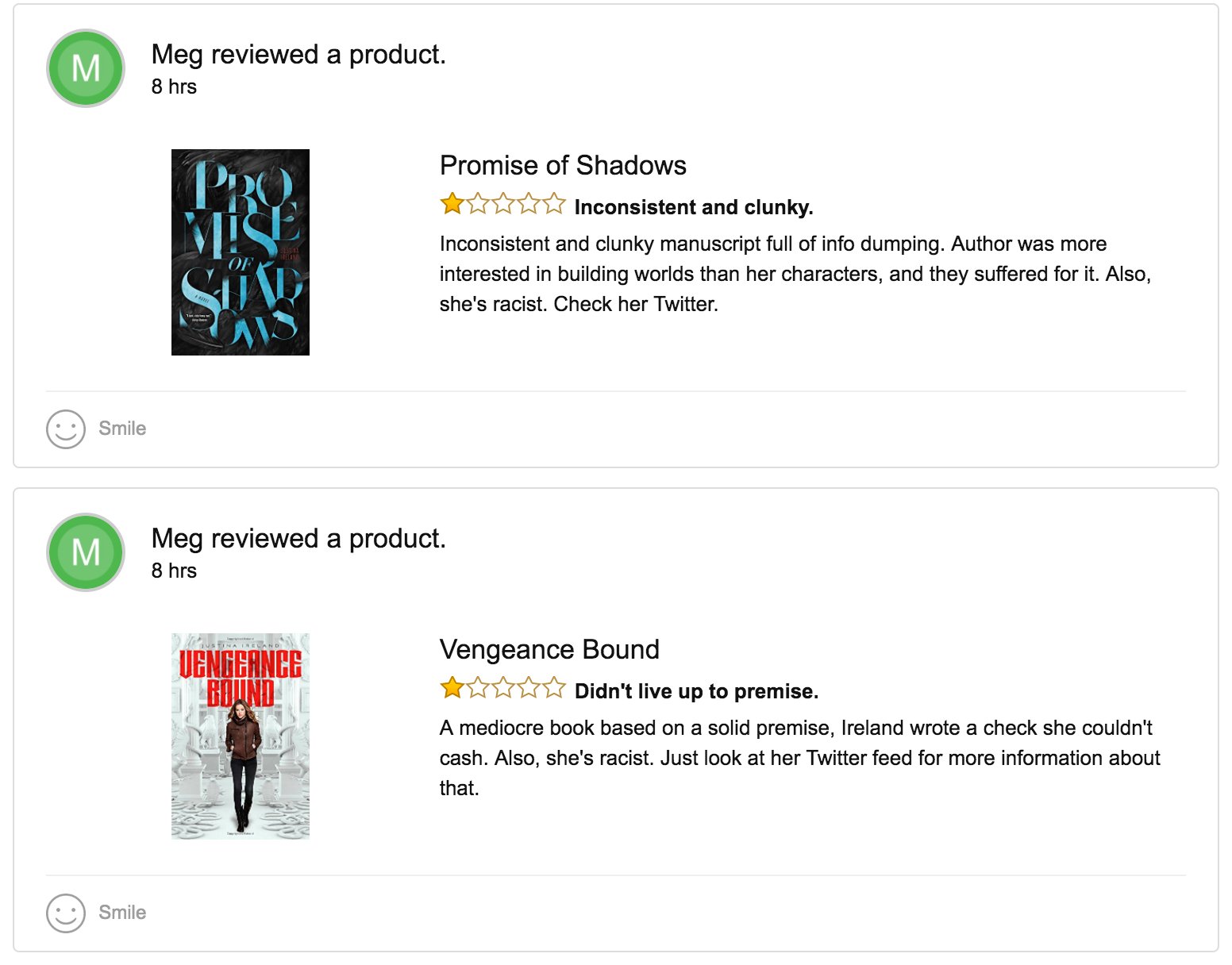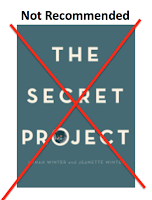This morning (May 3, 2017) I learned about Run for your Life by Trevor Kew, due out from Lorimer on August 1 of this year. I did a series of tweets about it. I'm pasting them here (I don't know how to remove the gray background from 2-15).
1) Due out sometime this year is a book that's making me go oh-oh. Set in Canada, the story is abt a kid whose dad was a refugee from Iran.
2) The kid is a runner. Rather than help with a fundraiser for First Nations displaced by a fire, he'd rather train for a big race.
3) When he's wiped out, he gains what he needs to keep going by imagining he is being chased by bloodthirsty savage Indians w tomahawks.
4) Training session over, he's catching his breath at a park. Someone asks him if he's ok. That someone is... a First Nations teen.
5) The First Nations teen is named Jason. He asks Chris (the runner) if someone was chasing him.
6) Chris knew it was not ok to imagine being chased by blood thirsty savage Indians. Jason's question, then, is awkward.
7) Chris realizes Jason is one of the FN people who is displaced by a fire. Turns out, Jason is also a runner.
8) The two boys will race against each other, later. And guess what: Chris still imagines himself being chased by savage Indians.
9) I get where the author (Trevor Kew) is going with this story (RUN FOR YOUR LIFE), but did he imagine Native teens as readers of this bk?
10) There were huge fires in Canada recently. So many Native ppl in my networks were fearful for family in danger of the fires.
11) With that in mind, this story might seem relevant and timely to some but I have doubts. And questions.
12) What I shared here is from the "look inside" feature at Amazon. It is due out on August 1, 2017, from Lorimer.
13) When Chris introduces Jason to his friends, there is awkward silence as they look at him. Then, the Korean kid says "You're a real ---"
14) Chris steps in before Yongwon (the Korean kid) says "Indian", saying "hockey player" instead. That's when Jason tells them his nation.
15) If I get RUN FOR YOUR LIFE, I'll be back.
-
I started to see conversations about Kiera Drake's The Continent on Friday, Nov. 4, 2016. The next day, I started a thread about what I was seeing.
-
My remarks, as the title for this Storify indicate, are from a Native perspective. For those who don't know who I am, I'm tribally enrolled at Nambe Pueblo. I'm a former schoolteacher and assistant professor in American Indian Studies. I've got a PhD in Education, and a Master's Degree in Library and Information Science. I have research and professional articles in a wide range of books, journals, and magazines. I bring all that to bear on the analyses I do of children's and young adult literature.
-
If you follow YA twitter, you likely know that people are talking about Kiera Drake's THE CONTINENT. Some use the hashtag #TheContinent.
-
By then, I'd gotten some questions about it from readers of my site. Based on those questions, I did one of the "Debbie--have you seen" posts about it:
-
 Debbie--have you seen CONTINENT by Kiera Drake?Designed to help readers develop a critical eye about representations of American Indians in children's and young adult books
Debbie--have you seen CONTINENT by Kiera Drake?Designed to help readers develop a critical eye about representations of American Indians in children's and young adult books -
The ways Drake depicts Native and characters of color is why people are talking about her book. My copy of #TheContinent is in the mail.
-
What I saw, specifically, were Justina Ireland's photographs of passages in her ARC (advanced reader copy) of the book.
-
-
 ...I mean, this isn't a great leap of logic here... pic.twitter.com/qJ0fsCaNqa
...I mean, this isn't a great leap of logic here... pic.twitter.com/qJ0fsCaNqa -
Justina's "great leap of logic" was about Drake using "Topi" as the name of the Indigenous nation. Change that letter T to an H an you've got Hopi. The Hopi Tribe is a federally recognized sovereign nation in Arizona.
-
 Feeling preeeety lucky the one black dude was the groundskeeper right about now. pic.twitter.com/YmOiu06eey
Feeling preeeety lucky the one black dude was the groundskeeper right about now. pic.twitter.com/YmOiu06eey -
Justina's critique drew a lot of attention, with a lot of people condemning The Continent based on her critique. There were, of course, a lot of responses from people who said those who hadn't read The Continent, or, who hadn't finished reading it, shouldn't say anything at all about it.
-
That response reminded me of work I did on Martina Boone's Compulsion, so I shared links to my review of it and an especially powerful comment.
-
COMPULSION is the 2nd in a 3 book series from Simon Pulse (Simon and Schuster). It has problems, too: … https://americanindiansinchildrensliterature.blogspot.com/2015/06/martina-boones-compulsion.html …
-
 I received an anonymous comment to my review of COMPULSION that applies to Drake's #TheContinent: pic.twitter.com/lLQb0Uzqnp
I received an anonymous comment to my review of COMPULSION that applies to Drake's #TheContinent: pic.twitter.com/lLQb0Uzqnp -
I hope writers reading this thread on #TheContinent will share that anonymous comment with fellow writers.
-
The conversation about The Continent is taking place in November, which is designated--by Presidential Proclamation--as Native American Heritage Month. Overall, I think designated months (or days) for this or that are best used to share resources and SHOUT that books by Native writers should be used all year long. So, I shared some terrific books.
-
I have a request. If you've been tweeting about #TheContinent, could you take time to also boost Native writers?
-
Or, maybe you're not tweeting about #TheContinent, but are nodding in agreement with criticism of it... can you boost Native writers?
-
It is #nativeamericanheritagemonth. See #IndigenousReads or #NativeReads or #HonouringIndigenousWriters for some suggestions.
-
-
-
The last two tweets are bks/stories in science fiction/fantasy, by @CynLeitichSmith, @aaronpaquette, @JosephBruchac, @TheDHTaylor...
-
... @ShiningComic, @DaveAlexRoberts, and so many others! Get the books! Know their names! They do write other books, too.
-
And get some for younger sibs or nieces/nephews! Here's 30: http://www.firstnations.org/HeritageMonth2016 … #NativeReads
-
And given your reaction to #TheContinent, I'm picturing you walking to the order desk with the list in hand and asking for the books.
-
My guess is you will probably get them online. If so, please consider getting them from @birchbarkbooks.
-
Then, I asked people to go read Justina's thread. I'm asking you (who are reading this Storify) to go read her thread, too.
-
If you're wondering how you can learn more abt #TheContinent, see @justinaireland's thread here: https://twitter.com/justinaireland/status/794365973159677952 …
-
In response to her critique, some childish and vicious things happened:
-
 These are not reviews. They are personal attacks driven by childish motives. Who are you, "Meg"? pic.twitter.com/KrVgf4I9FE
These are not reviews. They are personal attacks driven by childish motives. Who are you, "Meg"? pic.twitter.com/KrVgf4I9FE -
I asked if people had seen those attacks on Justina, and, if they'd read that someone wrote to her editor, Jordan Brown. I linked to his response. Click through and read what he said.
-
And that someone wrote to Justina Ireland's editor, anonymously? https://twitter.com/thisjordanbrown/status/794945632687587332 …
-
As I continued to follow all this, I remembered another book from Harlequin Teen:
-
-
But, to return to #TheContinent. The publisher is @HarlequinTEEN. In 2014, they published HOOKED, which was a mess: … https://americanindiansinchildrensliterature.blogspot.com/2014/01/hooked-by-liz-fichera.html …
-
A colleague, @BishopNaomi reviewed it, too: … https://americanindiansinchildrensliterature.blogspot.com/2014/01/naomi-bishop-native-librarian-reviews.html …@HarlequinTEEN isn't doing well at all w Native representations.
-
Lest anyone think these problems are rare, I took time to point to Raina Telgemeier's Ghosts, which is a best seller that misrepresents the missions in California and Dia de Los Muertos.
-
I know people love Raina. With good reason. But... she messed up in GHOSTS. See @booktoss review https://booktoss.wordpress.com/2016/09/18/ghosts-swing-and-a-hard-miss/ … or, see...
-
... my review of Telgemeier's GHOSTS:… https://americanindiansinchildrensliterature.blogspot.com/2016/09/not-recommended-ghosts-by-raina.html … or the post that @yuyimorales did: http://readingwhilewhite.blogspot.com/2016/11/day-of-dead-ghosts-and-work-we-do-as.html …
-
As far as I can tell, @farre is the first to write a critical rev of GHOSTS: http://www.teenservicesunderground.com/a-look-at-ghosts/ … That is 4 Native/WOC saying no to it.
-
In the conversations about The Continent I began to read that Kiera Drake had sensitivity readers who'd read her manuscript.
-
Author of Harlequin Teen's HOOKED had sensitivity readers too, but it was also a fail. White saviors. https://twitter.com/youandyourego/status/795110029598724096 …
-
With #TheContinent author ref to sensitivity readers, I am sharing old post abt beta readers. @tinytempest… https://americanindiansinchildrensliterature.blogspot.com/2015/02/dear-writers-and-editors-some-cautions.html?m=1 …
-
On Sunday morning, I picked up the thread again. Sometime on Saturday night, Drake posted a statement to her blog.
-
5:00 AM, 11/6/17: Adding to the thread I started yesterday, on #TheContinent by Kiera Drake, to add to what others said overnight.
-
Drake posted a response to conversations about her book: http://keiradrake.com/response/ . What she says in it make things worse, not better.
-
I shared examples of things that I think a lot of people never see, because they're living in bubbles of Whiteness that blind them to what I and a lot of other people see all the time.
-
My social media feeds are full of updates from #NoDAPL. I wonder if Drake, her friends, and ppl at Harlequin know what is going on there?
-
On Friday, I'd wondered if Little House on the Prairie was one of Drake's favorites. In her statement, Drake told us that Lord of the Rings is a favorite and that it influenced her work on The Continent:
-
Anyway, in her response to criticism of #TheContinent, Drake said one of her favorite books is Lord of the Rings. The "Topi" are savage...
-
... like the Uruk-Hai. On Nov 4, I wondered if LITTLE HOUSE ON THE PRAIRIE might be one of her favorite books: https://twitter.com/debreese/status/794591755760963584 …
-
Native writer @CyborgN8VMari used Justina's photo and two others to create a powerful image that challenges Drake's claim that she wasn't thinking of Native peoples when she created the Indigenous people in The Continent:
-
-
-
Here's a screen capture of Drake's post:
-
 In her statement, Drake says she and her editors are revisiting the manuscript. http://keiradrake.com/response/ pic.twitter.com/neVtY6l58G
In her statement, Drake says she and her editors are revisiting the manuscript. http://keiradrake.com/response/ pic.twitter.com/neVtY6l58G -
I do not think it will be ok. Changing phrases will not change the underlying premise of the book.
-
-
If @HarlequinTEEN decides to hold off on their planned Jan release of #TheContinent, it will join @Candlewick re WHEN WE WAS FIERCE.
-
. #TheContinent is due out on Jan 3, 2016. If Harlequin releases it & pulls it later, it'll be like A BIRTHDAY CAKE FOR GEORGE WASHINGTON.
-
Here's another part of Drake's post about her book:
-
 Setting #TheContinent itself aside, I join others who noted that Drake's response included a claim to having Native American heritage. pic.twitter.com/qbZvNc0oo6
Setting #TheContinent itself aside, I join others who noted that Drake's response included a claim to having Native American heritage. pic.twitter.com/qbZvNc0oo6 -
Drake offers up pride in her "Native American" ancestry in the same paragraph where she said the savage Topi in #TheContinent aren't Native.
-
That's a fail, too. Read @Kate_Hart's thread on that. She wrote it some time ago and shared it again last night. https://twitter.com/Kate_Hart/status/795099994260967425 …
-
And, another screen capture. This part is about sensitivity readers:
-
 Drake's statement about #TheContinent also says she had sensitivity readers on the manuscript: pic.twitter.com/dNv92rgWoP
Drake's statement about #TheContinent also says she had sensitivity readers on the manuscript: pic.twitter.com/dNv92rgWoP -
I pointed to a post I wrote about who you (writers/editors) hire to do vetting, or, sensitivity reads. In short: readers take your work seriously. Don't shoot yourself in the foot by getting sensitivity readers who can't, or won't, give you the critical feedback you need.
-
Who you have, writers/editors, as sensitivity readers, is important. I wrote about that in 2015: … https://americanindiansinchildrensliterature.blogspot.com/2015/02/dear-writers-and-editors-some-cautions.html …
-
During the night, @swingingstorm shared her experience. Go read it: https://twitter.com/swingingstorm/status/795124418481635328 …
-
As I noted yesterday, @HarlequinTEEN failed in 2014 with HOOKED: … https://americanindiansinchildrensliterature.blogspot.com/2014/01/hooked-by-liz-fichera.html …
-
Remember the Lee & Low diversity survey that @readingspark and ppl at @LEEandLOW did? http://blog.leeandlow.com/2016/01/26/where-is-the-diversity-in-publishing-the-2015-diversity-baseline-survey-results/ …
-
I think the many levels of fail of #TheContinent can be attributed to lack of diverse staff AND ignorance of staff, at Harlequin.
-
From another of Justina's tweets (this was a photo of the acknowledgements), I read that Natashya Wilson was Drake's editor.
-
Drake thanks her editor, Natashya Wilson, who is exec editor at @HarlequinTEEN : http://www.harlequin.com/articlepage.html?articleId=1403&chapter=0 …
-
Curious, I looked back at Hooked to see if, by any chance, Wilson had been the editor of it, too. Fichera acknowledged Wilson but didn't say she was the editor. Re-reading Fichera's note, however, I decided to share this screen cap of it.
-
-
 I see that Wilson was editor of HOOKED, which had problems. Oh, and this in acknowledgements from its author (Fichera): pic.twitter.com/FfdsctF3Ik
I see that Wilson was editor of HOOKED, which had problems. Oh, and this in acknowledgements from its author (Fichera): pic.twitter.com/FfdsctF3Ik -
I'm pretty sure Natashya Wilson at @HarlequinTEEN is following all this abt #TheContinent. I want to hear from her abt it, and HOOKED, too.
-
Later on Sunday, I saw that a petition was circulating:
-
Newest dev re #TheContinent: petition to @HarlequinTEEN asking it be delayed: http://www.thepetitionsite.com/942/983/744/delay-publication-of-the-continent/ … At 1:38PM on 11/6/16, 106 signed.
-
I also saw tweets from another person who was reading The Continent:
-
 Tell me again how this isn't a White Savior narrative pic.twitter.com/azfzqkl2m0
Tell me again how this isn't a White Savior narrative pic.twitter.com/azfzqkl2m0 -
This morning (Monday, Nov 7), I see that @amzngbookshelf has posted a review:
-
 REVIEW: The ContinentFor her sixteenth birthday, Vaela Sun receives the most coveted gift in all the Spire—a trip to the Continent. It seems an unlikely destination for a holiday: a cold, desolate land where two “unciv…
REVIEW: The ContinentFor her sixteenth birthday, Vaela Sun receives the most coveted gift in all the Spire—a trip to the Continent. It seems an unlikely destination for a holiday: a cold, desolate land where two “unciv… -
When I get my copy, I'll read and review it. As usual, I will focus on the Native content. If the publisher and Drake decide to withdraw the book, my review will still be useful to writers who are doing similar stories--or contemplating doing one.
-










